Ponferrada – Villablino
CHARACTERISTICS
- OUT OF SERVICEPonferrada / VM
- OUT OF SERVICEColumbrianos / VM
- OUT OF SERVICESan Andrés de Montejos / VM
- OUT OF SERVICECubillos del Sil / VM
- OUT OF SERVICEPradilla / VM
- OUT OF SERVICESanta Marina del Sil / VM
- OUT OF SERVICEToreno / VM
- OUT OF SERVICEAlinos-Antracitas de Gaiztarro / VM
- OUT OF SERVICEMatarrosa del Sil / VM
- OUT OF SERVICESanta Cruz del Sil / VM
- OUT OF SERVICEPáramo del Sil / VM
- OUT OF SERVICEPáramo del Sil / VM
- OUT OF SERVICEPalacios del Sil / VM
- OUT OF SERVICECuevas del Sil / VM
- OUT OF SERVICEVillarino del Sil / VM
- OUT OF SERVICERabanal / VM
- OUT OF SERVICESan Miguel - Villager / VM
- OUT OF SERVICEVillablino / VM
The railway from Ponferrada to Villablino can be considered a consequence of the energy shortage in Spain during the First World War, which made it necessary to boost national coal resources. This project, which connected the capital of El Bierzo with the Laciana valley, was presented at the beginning of 1918 by the National Coal Consortium. Its construction, like that of other lines of this type, Puertollano to Conquista or Calahorra to Armedillo and the Préjamo mines, was speeded up thanks to the Coal Railway Law, published that same year, which established fast-track management for this type of initiative. The project also envisaged the establishment of a public passenger transport service. [1] [2]
The railway project from Ponferrada to Villablino came about as a result of the First World War.
Work began in July 1918 under the responsibility of the Minero Siderúrgica de Ponferrada (MSP) company, which had been created a few months earlier for this purpose. The orographic difficulties of the terrain made it necessary to dig numerous tunnels and build various bridges and retaining walls. Despite this, the line was completed in ten and a half months, setting a record for the speed of railway infrastructure construction in Spain. It was opened to traffic in July 1919. [3] [4]
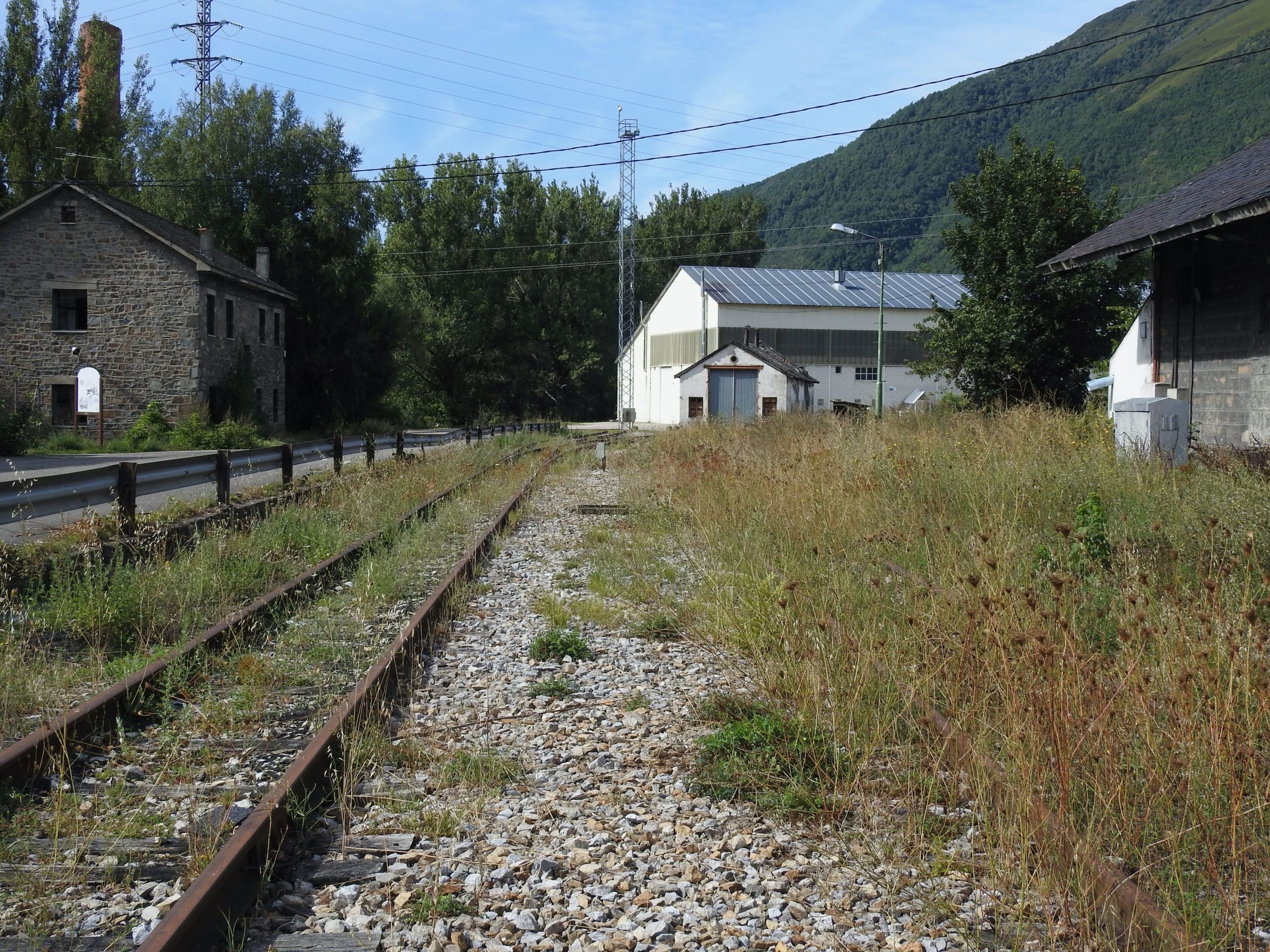
Estación de Villablino (León)
From the moment it was commissioned, the line was operated by the Compañía Minero Siderúrgica de Ponferrada, transporting coal from its own mines as well as from other operations, in addition to passengers, various goods and mail.After the Civil War, a line was proposed between Villablino and Pravia via Cangas de Narcea, with the aim of exporting coal from Laciana and Alto Sil through the port of San Esteban de Pravia (Asturias). However, this line was never put into service and there are still remains of the abandoned works.
In 1978 the passenger train known as the ‘Mixto’ ceased to operate, leaving Villablino first thing in the morning and arriving in Ponferrada at around 9:00 am with a return from Ponferrada between 5:00 pm and 7:30 pm, depending on the season. Finally, in May 1980, the ‘Correo’ train ran for the last time between Villablino and Ponferrada, putting an end to steam traction in regular passenger services in Europe. [2] [5]
Since it was built in 1919, the line was operated by Minero Siderúrgica de Ponferrada.
In the 1980s, the transport of coal from other companies was abandoned and coal was no longer transferred to the RENFE network. The coal was transported to the Ponferrada coal washing plant and then transferred to the Compostilla II coal yard in Cubillos del Sil. The construction of a coal washing plant and locomotive workshops in Villablino, together with the hauled stock workshops in Cubillos del Sil, meant that the connection with Ponferrada was no longer of interest and the line ceased to operate in July 1996.
However, in 1999, the regional government of Castile and León renewed the 50-year concession to the Compañía Minero Siderúrgica de Ponferrada, which later became the company Coto Minero Cantábrico after its merger, in November 2008, with the company Hullas del Coto Cortés. Until 2012, trains carrying washed coal travelled from Villablino and Alinos to Cubillos del Sil, bound for the Endesa power station or Cubillos station itself, where there was a coal reserve.
Until 2012, trains carrying coal that had already been washed travelled from Villablino and Alinos to Cubillos del Sil, bound for the Endesa power station or Cubillos station itself [...]
Since 2012 the line has no longer provided a rail service and there have been various plans for its revitalisation. Currently, according to the Regional Government of Castile and León, which owns the line, it is planned to revitalise it as a tourist train. [‘1’] In fact, a Ponfeblino Tourist Train Consortium has been created, made up of the Regional Council and the affected Town Councils with the aim of putting the Ponfeblino Tourist Train into operation and running it as an element of economic development in the region. It is expected to be operational by the summer of 2026. [6] [7]
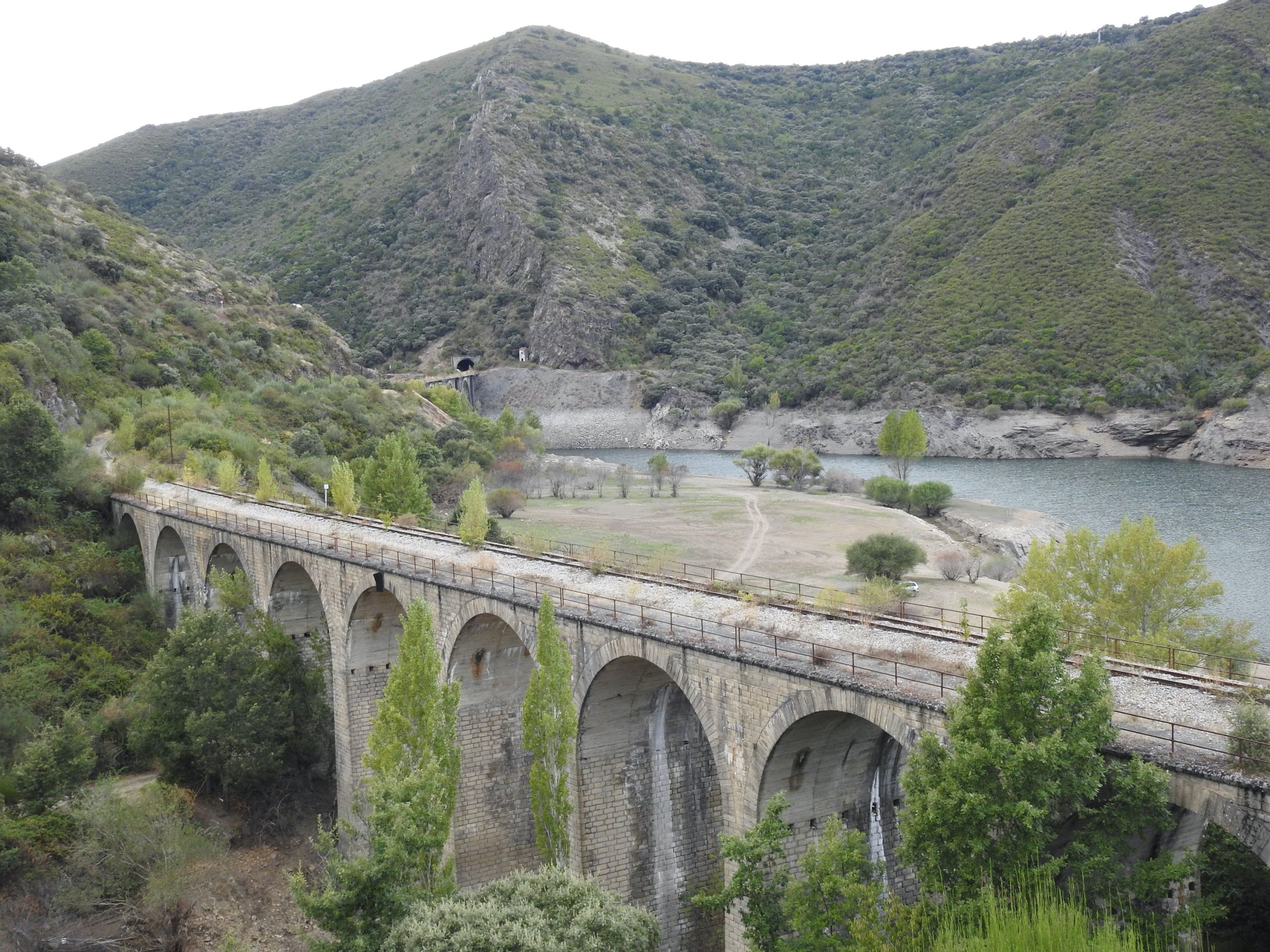
Vista de la Línea Ponferrada - Villablino sobre el Puente del Cantarín
In terms of landscape, the line has a very high value that makes it very suitable for its eventual tourist promotion. The route starts from the mining town of Villablino and runs parallel to the banks of the river Sil, heading south, offering privileged views of the Leonese mountains.A mountainous territory with steep slopes, with peaks over 2,100 m high and valley floors at 800 m. The hillsides are covered with deciduous forests, beech, oak, birch and chestnut trees, some reforested pine forests, as well as stands of yew, holm oak and holly.
In terms of the landscape, the line has a very high value which makes it very suitable for the potential development of tourism.
The line circles the Las Rozas reservoir, which is used for hydroelectric production, and in some cases crosses the urban fabric of the towns located on the banks of the Sil. Near its arrival in Ponferrada, another reservoir, Bárcena, once again characterises the landscape at the bottom of the valley. The old mining activity, now disappeared, can be seen in the industrial remains of the mines, but also in the villages themselves: monuments to the memory of the work, machinery in some closed mine entrances, remains of the coal stockpiles, etc.
The whole area belongs to the Natura 2000 Network and the Laciana Valley Biosphere Reserve. Capercaillie and brown bears can be found in the deepest and least visited forests.
All the stations are abandoned, and although modest, they have a certain charm. Some even retain original machinery.
Category C2.
Disused railway line in an abandoned or partially dismantled state.
Photographic report
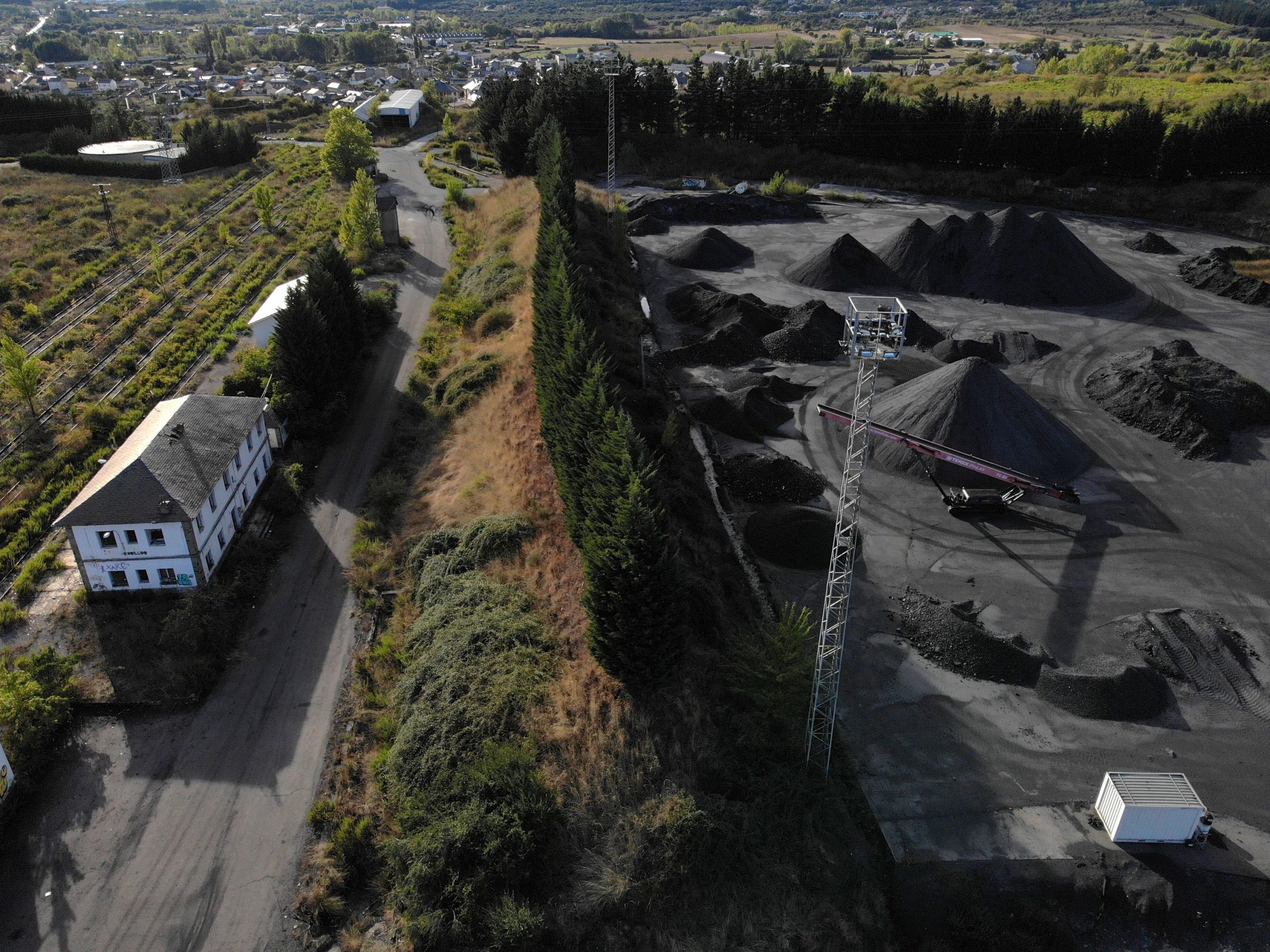
Vista de la playa de vías en Cubillos de Sil (León)
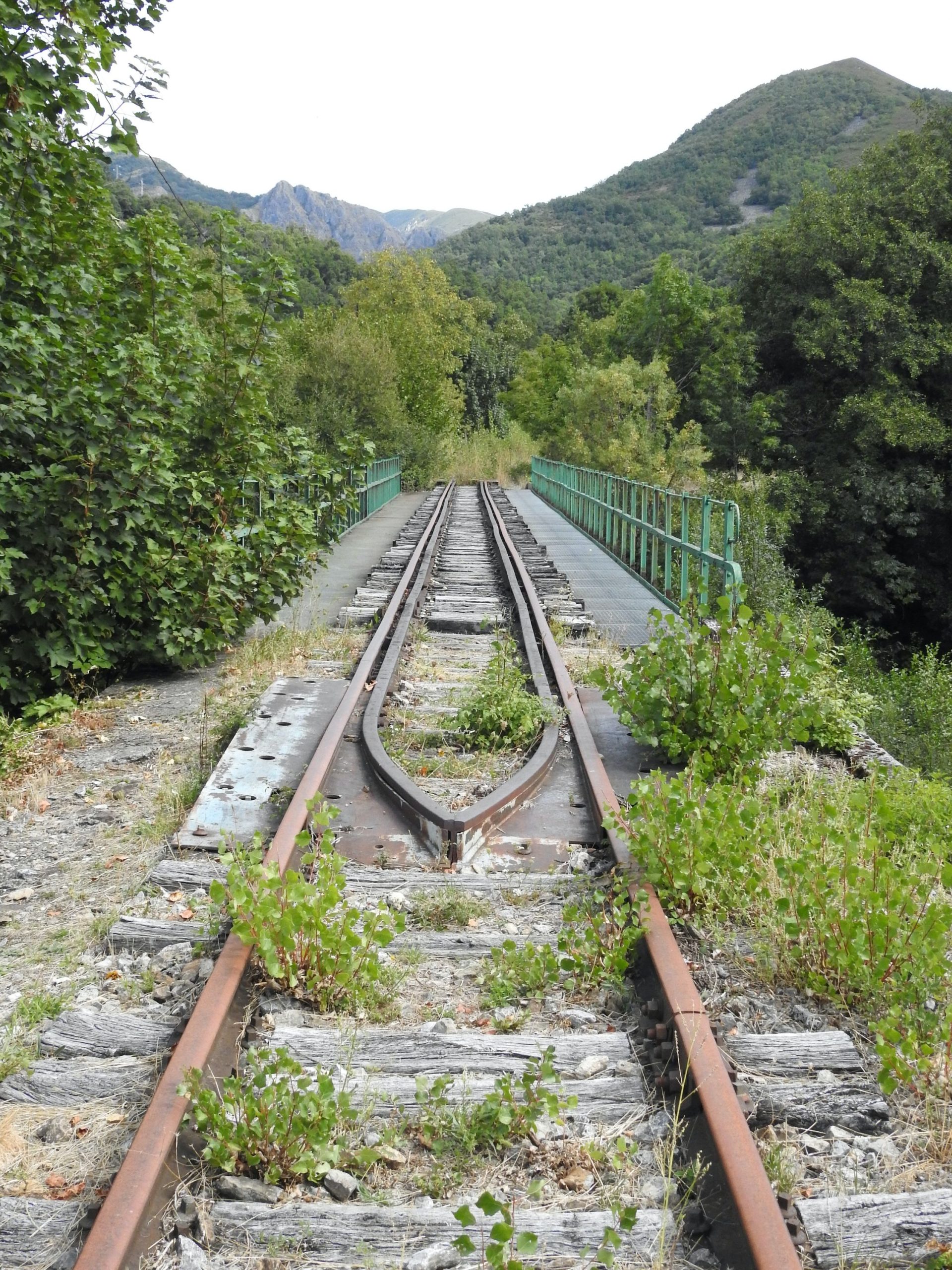
Vista de la Línea Ponferrada - Villablino sobre el Río Sil
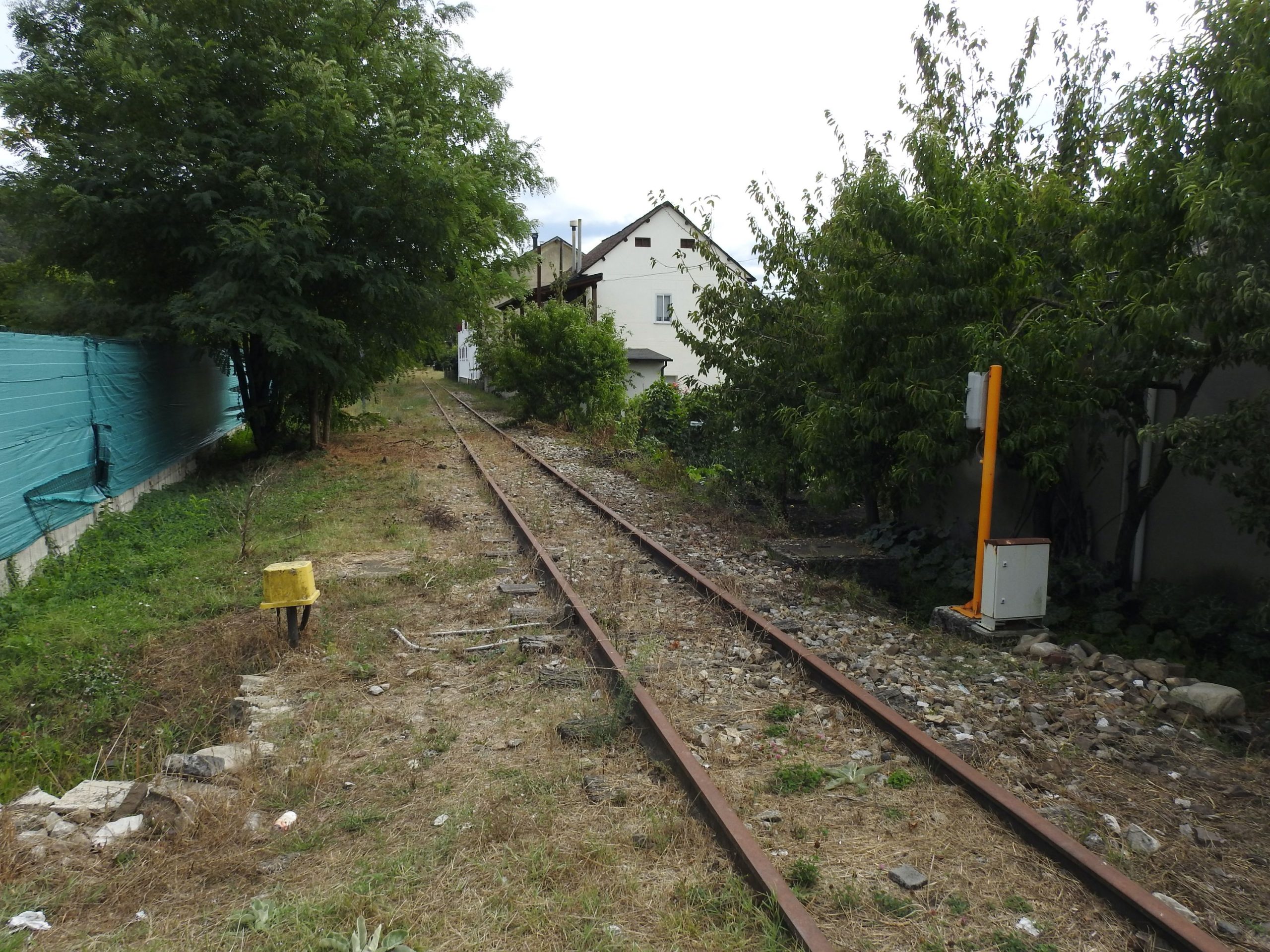
Vista de la Línea Ponferrada - Villablino
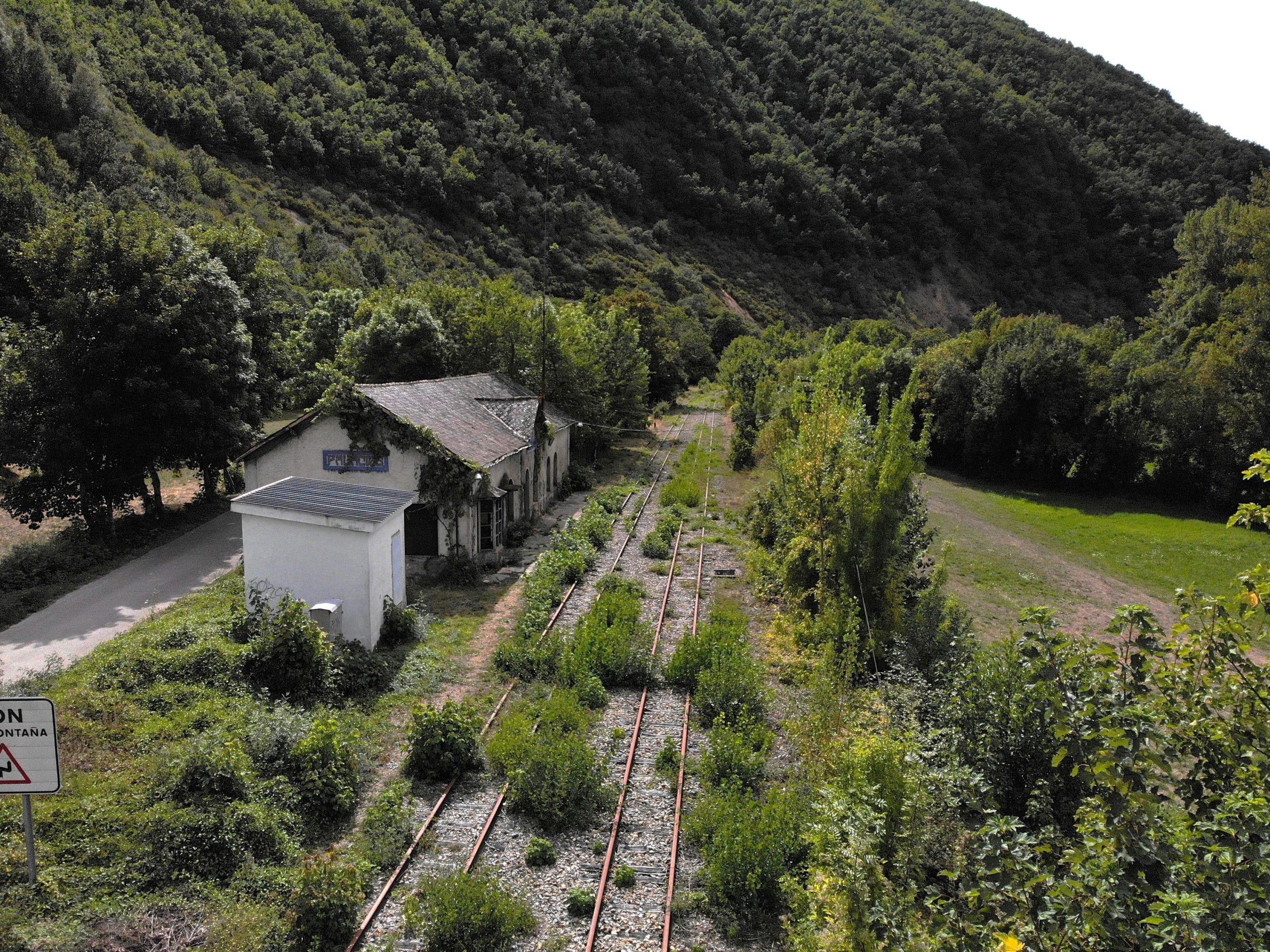
Estación de Palacios (León)
References
-
«El Ponfeblino estará listo para su puesta en marcha en agosto de 2026 y el Consorcio no renuncia a otra fase que lo conecte con Ponferrada», InfoBierzo, 18-oct-2023. [En línea]. Ver referencia
-
J. M. L. de Uribe, «Cien años del Ponfeblino, el ferrocarril minero que surgió de la Primera Guerra Mundial», iLeón, 21-jul-2019. [En línea]. Ver referencia
-
M. Ramos; O. Urgelés. Ponferrada-Villablino. El ferrocarril del Sil. 2019. Punto Rojo Libros.
-
J. M. L. de Uribe, «Cien años del Ponfeblino, el ferrocarril minero que surgió de la Primera Guerra Mundial», iLeón, 21-jul-2019. [En línea]. Ver referencia
-
«El Ponfeblino estará listo para su puesta en marcha en agosto de 2026 y el Consorcio no renuncia a otra fase que lo conecte con Ponferrada», InfoBierzo, 18-oct-2023. [En línea]. Ver referencia